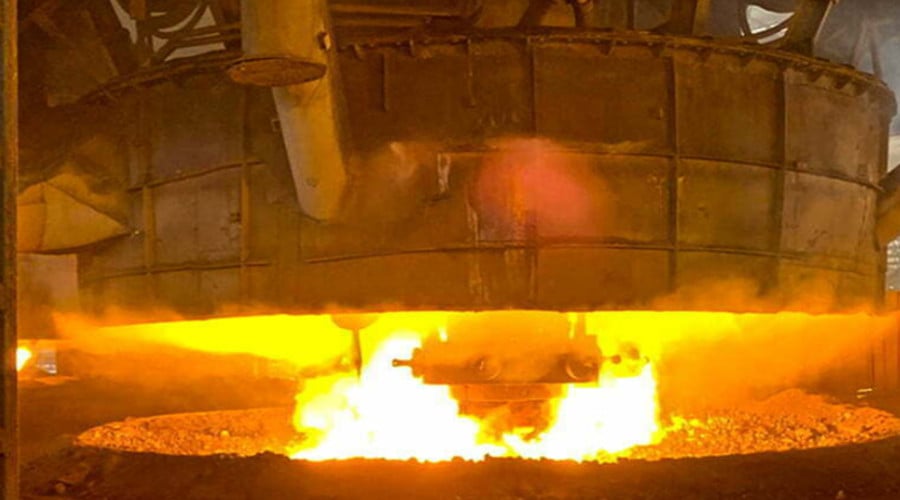Submerged arc furnace is a common industrial equipment widely used in high-temperature heating processes in fields such as metallurgy and chemical engineering. As an important component of a submerged arc furnace, the furnace cover plays a crucial role.
One of the main functions of the submerged arc furnace cover is to protect the ore and fuel inside the furnace from external environmental pollution. The furnace cover can effectively isolate the entry of air and water, preventing the oxidation of ore and fuel due to moisture. At the same time, the furnace cover can also prevent the leakage of high-temperature gas and smoke inside the furnace, maintain stable pressure and temperature inside the furnace, and ensure efficient reaction inside the furnace.
In addition, the submerged arc furnace cover can also play a role in energy conservation and emission reduction. During the high-temperature heating process of a submerged arc furnace, the sealing performance of the furnace cover has a significant impact on energy consumption and environmental pollution. A good furnace cover can reduce heat loss, improve energy efficiency, and reduce emissions of harmful gases such as carbon dioxide. Therefore, the research and application of efficient furnace cover technology is of great significance for promoting the sustainable development of submerged arc furnaces.
At present, with the continuous progress of science and technology, the materials and structures of the submerged arc furnace cover are also constantly innovating. Traditional furnace covers mostly use materials such as refractory bricks, which have good refractory performance at high temperatures. However, there are also problems such as high thermal expansion coefficient and poor thermal conductivity. In order to overcome these problems, people began to develop and apply new materials, such as high-temperature alloys, ceramic fibers, etc. These materials have lower thermal expansion coefficients and better thermal conductivity, which can improve the service life and thermal efficiency of furnace covers.
In addition, the structure of the submerged arc furnace cover is constantly improving. The traditional furnace cover structure is relatively simple and generally consists of an upper cover, a lower cover, and a sealing device. However, this structure is prone to problems such as cracks and deformation under prolonged high temperatures. In order to solve these problems, people have begun to design and apply new furnace cover structures, such as double-layer structures, water-cooled structures, etc. These structures can improve the stability and durability of the furnace cover, and extend its service life.
In short, as an important component of the submerged arc furnace, the furnace cover has important functions such as protecting the materials inside the furnace, saving energy and reducing emissions. With the continuous progress of science and technology, the materials and structures of furnace covers are also constantly innovating to improve the performance and service life of furnace covers, making new contributions to the efficient operation and sustainable development of submerged arc furnaces.

